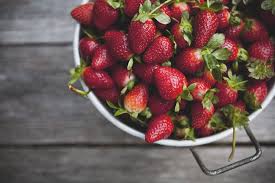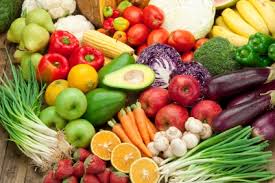How to Grow Better-Tasting Vegetables!
 Everybody’s had that one piece of fruit or vegetable whose taste just knocked their socks off. Mine was a blackberry given to me by Chef Jess at Triumph Brewery New Hope: it was at the peak of ripeness, perfectly sweet, utterly memorable.
Everybody’s had that one piece of fruit or vegetable whose taste just knocked their socks off. Mine was a blackberry given to me by Chef Jess at Triumph Brewery New Hope: it was at the peak of ripeness, perfectly sweet, utterly memorable.
But how do you grow tasty fruits and vegetables yourself? What’s the secret?
Turns out there are a variety of factors.
The first deals with climate. Make sure the plants you intend to grow are appropriate for your particular climate, microclimate, and growing season. This sounds obvious, but can make a huge difference where taste is concerned. Root crops and leafy vegetables prefer moist, cool conditions; and melons and most nightshade prefer sunny and warm weather. Planting your fruits and veggies in ill-suited microclimates will inevitably lead to an inferior-tasting crop.
Another consideration is the age at which you harvest. Harvesting immediately after maturation—especially true of root crops—tends to provide a fresher, ‘brighter’ tasting crop. This window is generally narrow, so make sure you’re checking your garden daily!
Of course, the plant’s genetic background also makes a huge difference. Seed brands chosen for outstanding taste often make an enormous difference. However, while selecting for taste, breeders have often inadvertently bred out essential nutrients in the process.
 The most important determinant of taste, however, is soil. In short, the better one cares for one’s soil, the better tasting one’s fruits and veggies. A crop grown in healthy soil will have consistently higher sugar levels, and will also have higher diffusion levels. (Diffusion is a measurement of the dissolved solids within a particular plant, including flavor, nutrients, and aromas.) To improve your soil health, follow the tips in our blog: It’s the Soil Stupid.
The most important determinant of taste, however, is soil. In short, the better one cares for one’s soil, the better tasting one’s fruits and veggies. A crop grown in healthy soil will have consistently higher sugar levels, and will also have higher diffusion levels. (Diffusion is a measurement of the dissolved solids within a particular plant, including flavor, nutrients, and aromas.) To improve your soil health, follow the tips in our blog: It’s the Soil Stupid.
Growing excellent-tasting fruits and vegetables does involve a little extra work, but is well worth the effort!
